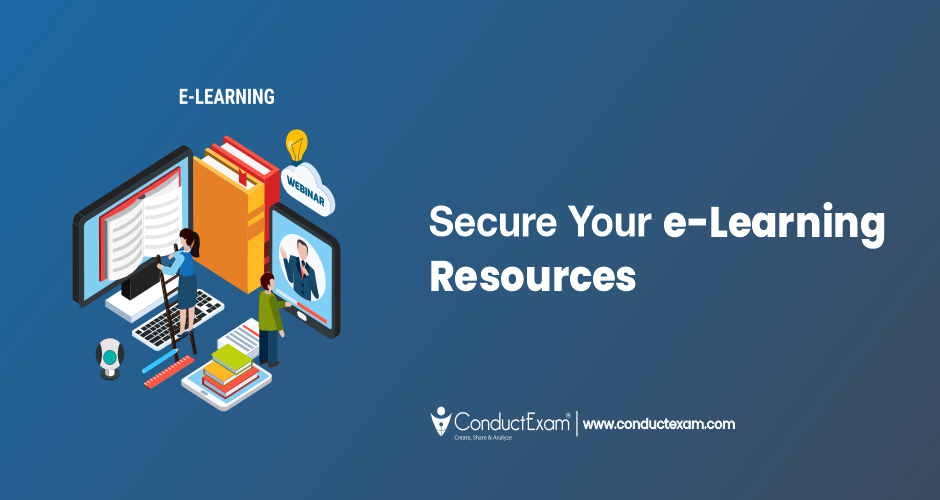Introduction
After the historical technological advancements in the education sector, the security of your intellectual property becomes more vulnerable. In addition, Securing your e-learning resources has become more difficult these days. Without using any Encryption Software or any password-protected file, it is impossible to deliver a unique content file to the target audience.
However, there are many businesses connected with it. Simply put, a coaching institute creates a course and sells it to the students who need it. Nowadays, there are many ways to do that. Some institutes sell the courses on online platforms like mobile applications. While others use the web application. However, these applications need a stable internet connection.
CD/USB-based e-learning or resources do not require an internet connection. However, Institutes just download all the videos or study materials on the pen drive and sell them to the users. For students or candidates who do not have a proper internet connection and want to learn from home, this is the best option to choose.
These decisions about how to give courses to students need a proper security service. That’s where the encryption software comes into picture. Many algorithms can be used in encrypting software.
In this blog, we will talk about the basic understanding and importance of encryption software. And some encryption techniques that are available for the e-learning resources.
Understanding Encryption Software: A Brief Overview
Encryption is the process of converting readable data into a secure ciphertext. The ciphertext includes the numbers and the characters. That is available in an unreadable format. The encryption algorithm works with the encryption key.
Encryption software in messaging apps
When a message is sent, it automatically converts the words into ciphertext and transmits it to the second user. However, the algorithm also sends the key with its encrypted message, which helps to decrypt the message back to its original form.
However, in the context of e-learning, encryption software helps to protect sensitive data like video and audio lectures, full courses, study materials, etc. Now let’s take a look at the importance of encryption in e-learning.
The Importance of Encryption Software
Data Privacy
Educational institutions need one-of-a-kind software that protects the personal data and sensitive information of both students and faculty. Because if data is leaked somewhere, sometimes it can lead to a disaster. And when it comes to securing your resources, you might need software that protects the data. Moreover, Encryption software ensures that even if unauthorised access occurs, the data remains indecipherable.
Preventing Unauthorised Access
Encryption software helps prevent unauthorised access to the system. Coaching institutes that sell their courses via USB, pen drive, or Cloud-based services can prevent unwanted students from accessing information. This increases the credibility of the courses on the market. Encryption acts as a strong defence against hackers and unauthorised access.
Secure Communication
Nowadays, every institute works on online learning applications. Even online learning platforms have a communication forum. It helps to resolve the problems of students. Encryption safeguards communication channels.
Guarding Intellectual Property
Whenever an educator creates courses, it takes a lot of time and hard work to create a full course. The process starts by creating an overview of the subject, recording the video, editing the video, and putting it on the pen drive.
However, encryption also helps to prevent copying your unique content. If the video is going to share easily in the market. Then it might reduce its value. And also, in part, it reduces the revenue of the software.
Conduct Exam’s CD/USB security software offers you the feature of preventing unauthorised copying, distribution, or tampering with these resources and protecting intellectual property rights.
Maintaining Integrity
The software ensures the Integrity of the courses. It also maintains the trust of the students by ensuring that they receive the best learning resources that are not available on the market. It can contribute to the high reputation of the institute.
Encryption Techniques for e-Learning
End-to-End Encryption
This method ensures that data remains encrypted throughout its entire journey, from sender to recipient. In this method, there is no intermediary. Even service providers can access the unencrypted data.
Many tools on the market use end-to-end encryption. Tools like Signal and WhatsApp are using this algorithm technique.
File-Level Encryption
This encrypting process focuses on individual files or documents rather than messages or entire storage systems. It is commonly used for securing documents and media files.
It is also known as File-based Encryption (FBE). We can say that many companies use this software to secure their e-learning resources. Because it mainly focuses on the files.
Transport Layer Security (TLS)
The transport layer is one of the seven important layers in the network cycle. TLS is essential for securing data transmitted over the internet. It helps establish an encrypted link between a user’s browser and a server.
Full Disc Encryption
It is the process of encrypting an entire storage device or disc at once. However, if the device is lost or stolen, this software ensures that the resources are inaccessible without the encryption key. Full disc encryption helps secure USB- or CD-based resources.
Choosing the Right Encryption Software
Whenever the task of choosing the right encryption software comes up, you need to know about its basic standards. Here are some factors to consider:
Security Standards
Make sure that the software adheres to industry-standard encryption algorithms and protocols. RSA (Rivest-Shamir-Adleman) and AES (Advanced Encryption Standard) are two of the most popular encryption standards.
Usability
Educators and students who may lack extensive technical knowledge are likely to use this software, which should be user-friendly.
Compatibility
Ensure that your existing e-learning platforms and tools are compatible with the software.
Key Management
Proper key management is essential for effective encryption. Encryption keys should be generated, stored, and shared securely using the software.
Regular Updates
Cyber threats evolve rapidly, and encryption software should be regularly updated to address new vulnerabilities and ensure the highest level of security.
Last Words
As we see, e-learning continues to shape the education world. It is crucial for educational institutes or coaching institutes to secure their digital resources. Implementing encryption techniques in your learning premises scales up the integrity and trust of the institute.
ConductExam helps coaching institutes sell their digital courses on encrypted pen drives. Organisations sell their encrypted study materials, videos, and tests to users with 256-bit encryption. Users can access the pen drive without even connecting to the internet. However, the software provides you with features to prevent capture and screen recording.





Leave A Comment